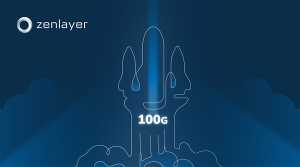Companies in the cloud era need to modernize their IT environments including infrastructure, WAN networks, and elastic connectivity technologies to ensure fast and reliable services and collaboration across all global locations. One of the most effective strategies is to deploy regional edge computing nodes and connect them with high quality dedicated cloud network services.
Let’s explore what dedicated cloud network is, and how it can augment and enable your cloud services for emerging markets.
Direct cloud connectivity: A brief overview
A direct cloud connection is a dedicated connection within a private network, or between a private network and the cloud. You can use a cloud network direct connection to instantly link edge computing infrastructure. This allows you to access most public and private clouds, and/or build out your own hybrid cloud.
Dedicated cloud network connections allow you to build a flexible network topology and bypass the challenges and uncertainty faced via public internet. In addition, you can build powerful cloud on-ramps or cloud off-ramp solutions.
Top 5 direct benefits of cloud connectivity
1. Global reach
42% of companies opt for cloud services to access data from anywhere, and 37% for better flexibility. (1) With a premium cloud connectivity service provider and a robust global private backbone network, you can instantly tap into edge cloud ecosystems from any location — including high-growth emerging markets high-growth emerging markets like Southeast Asia, India, and China.
2. Better cloud network reliability
The public internet is highly unreliable due to congestion, failure, and security vulnerabilities. By linking edge locations with dedicated private connections, you can bypass the public internet altogether and have more control.
However, as there are many hops for P2P connections, if one segment is broken, the whole service becomes impacted. For example, a cable running across the Atlantic Ocean might get cut or become unavailable due to maintenance. A cloud connection can offer protection and high reliability. It can decrease risk and provide SLA-backed network uptime of 99.9% or more.
3. Stronger cloud infrastructure security
Relying on proven and carrier adopted cloud technology, connecting edge computing devices and clusters directly to the cloud or the fabric with cloud on-ramp can significantly improve network security. Private lines limit data exposure and reduce the potential for breaches while data is in transit.
4. Rapid scalability
Businesses today need to be able to accommodate sudden spikes in traffic without compromising performance. Scalable cloud connections to the fabric and cloud infrastructures offer highly scalable capacity, allowing companies to scale up or down depending on network usage. Direct cloud connectivity can also support hybrid clouds, by allowing you to instantly connect private infrastructure to public cloud resources, for less latency and greater flexibility.
5. Higher edge computing ROI
Dedicated cloud connections enable better edge computing performance, stronger digital experiences, instant deployments, lower cost for bandwidth, and flexible service provisioning. This in turn leads to stronger ROI for edge computing resources, allowing companies to get more out of their investments.
Use Zenlayer Cloud Networking for next-generation connectivity
Looking for immediate direct cloud connectivity? Zenlayer offers Cloud Networking, which you can use to instantly connect data centers and cloud services and quickly create a resilient multi-region network.
To learn how Zenalyer’s Cloud Networking service supports public clouds, visit our product page.
Resources







